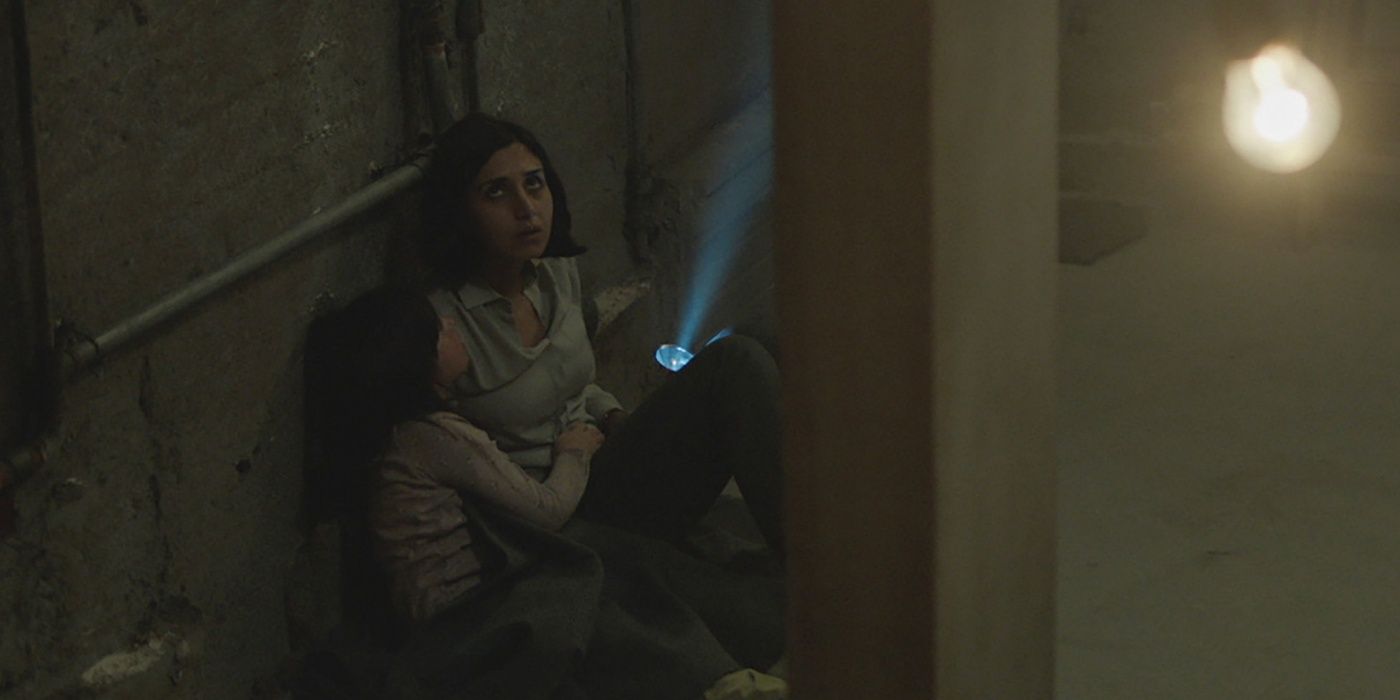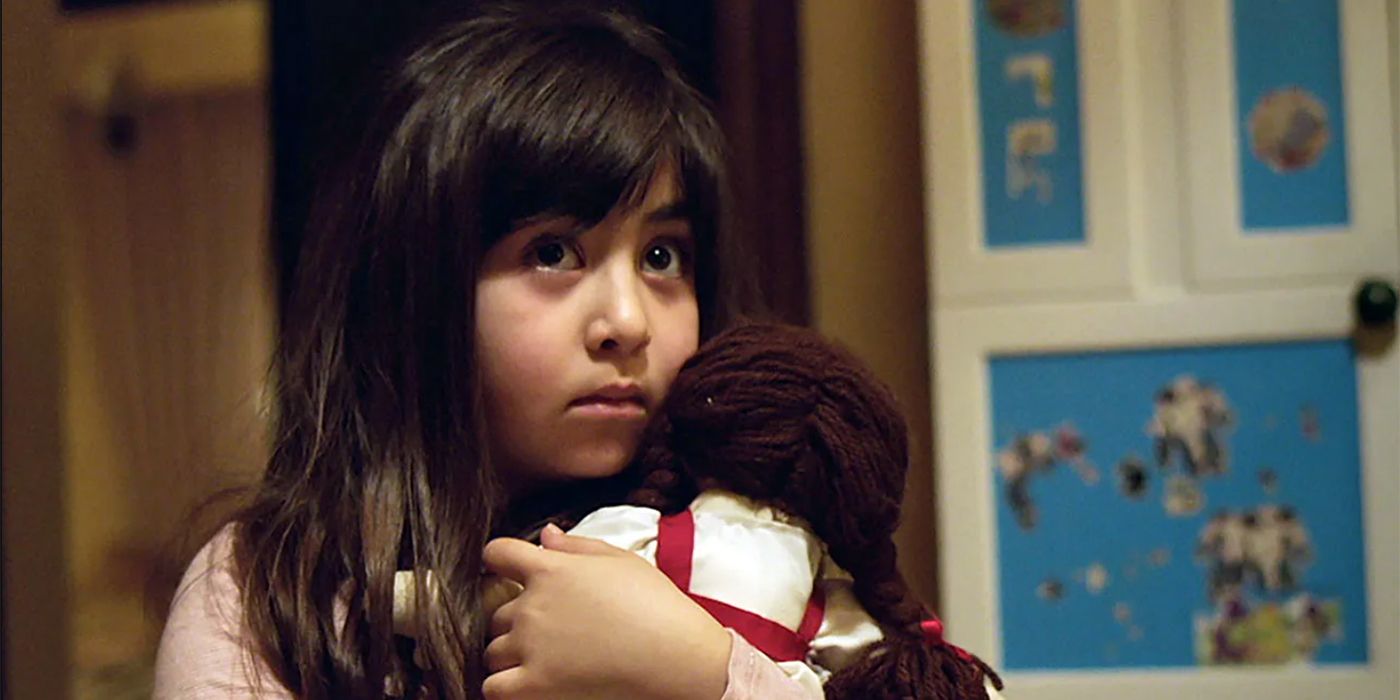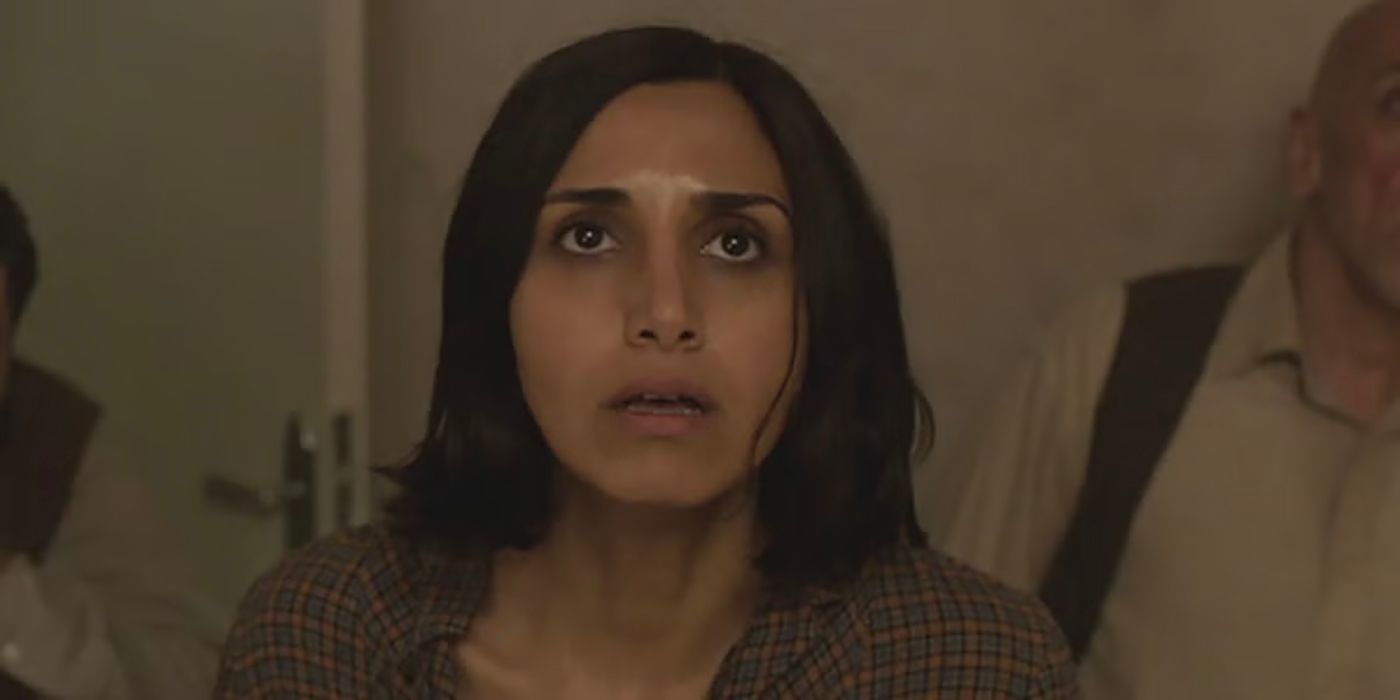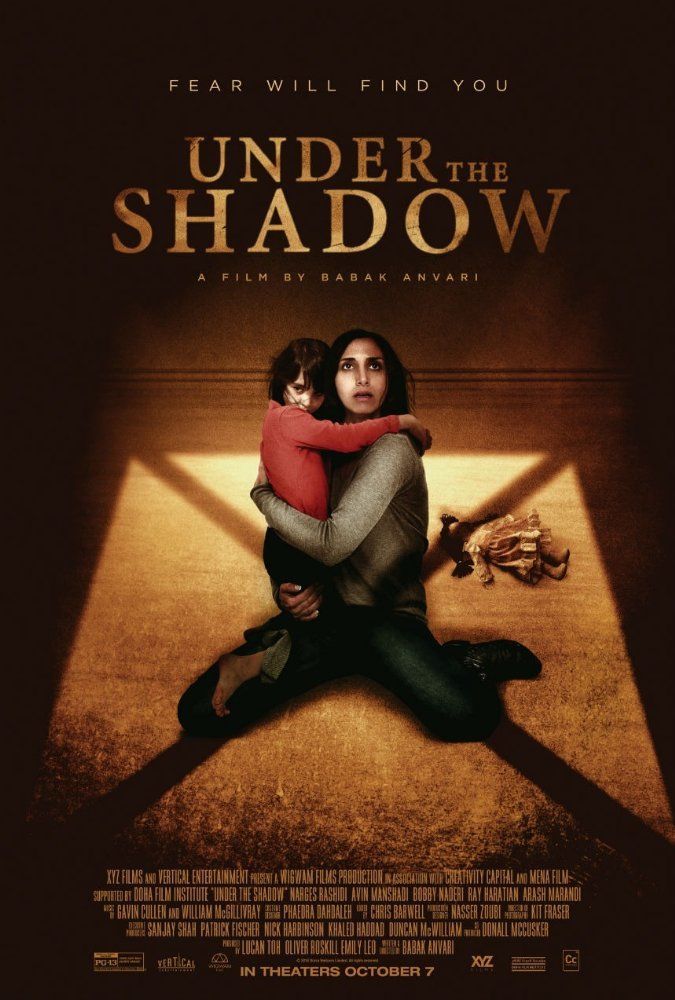It seldom happens that a horror movie encapsulates the very essence of the oppression and hopelessness that one feels when faced with a supernatural situation. Most mainstream horror flicks trade substance for heavy-handed scare, but thanks to streaming platforms, several underrated gems get to shine. Netflix has been considerably successful in putting the limelight on lesser-known projects, especially international content.
In this pool of unorthodox storytelling, one Iranian horror movie managed to raise the hair at the back of the neck of most critics. Babak Anvari’s Under the Shadow was listed as one of the best horror movies of the 21st century, and for good reason. While the perception of what accounts for good horror may differ, but prowess of Under the Shadow’s blend of fear and strong social messaging proves why it deserves universal recognition.
Under the Shadow Is A Chilling Tale of Forces Unseen
Understandably, with the lack of a theatrical release, gems like Under the Shadow often get passed up until they find new life on streaming platforms. Thanks to the likes of Netflix, Prime Video, and more, viewers get the opportunity to enjoy genres without constraint, and often stumble upon stories that are just too fascinating to ignore. In the world of cinema, specifically horror content, the level of skepticism is more pronounced because of the nature of the emotions the movies are trying to evoke.
Fans have seen it all, from disfigured demons to body horror that will leave them sick to the stomach. However, it’s a rarity to come across a fusion of supernatural and drama that has a perfect balance. One such intense story came from the brilliant mind of the British-Iranian director, Babak Anvari.
Inspired by his childhood events in Tehran, Under the Shadow follows the dramatic story of a family that goes through the combined horrors of war and paranormal activity. Taking place during a post-revolutionary conflict era in Iran, Shideh, her husband, and daughter are currently living in a war zone, and terrorized by the booming of missiles and fires day and night. Shideh used to be a medical student at a university but is barred from continuing her studies because of her previous involvement with student politics.
Shideh is left feeling bitter by the oppressive and extremist approach, which further intensifies when her husband is called for military service. Determined to stay where she was, Shideh declines her husband’s offer to move with her in-laws to a safer part of the country and remains within the line of fire with her daughter. However, things take a turn for the worse when, during one of the air raids, a missile falls through the upper floor and changes Shideh’s life forever.
Under the Shadow Draws Its Horror Elements From A Strong Mythological Standing

Right after the missile caused a giant hole in the building’s roof, eerie things started to happen to Shideh and her daughter Dorsa. This is where it gets interesting because instead of relying on gimmicky backstories of haunted houses and basements, Under the Shadow draws its lore from a more authentic source. It is implied that the missile strike that caused a hole in the building’s roof served as an opening for a Djinn to infiltrate human lives.
Djinns aren’t conventional supernatural beings, as they have strong roots in the Islamic and pre-Islamic Arabic era. Unlike ghostly figures who haunt houses and people because they are unable to move on, Djinns are considered to be autonomous beings with free will and existence of their own. They have the same standing as humans in the world, but they are accountable for their actions.
The only thing separating them is the thin veil between the human world and the supernatural one, but a devastating event like war that reeks of human fear and vulnerability sometimes causes them to crossover. Some Djinns live their lives, mind their own business, but some like to torment if they are disturbed or attracted to negative emotions, and what better than a residential building in the middle of a war zone for feasting on fear? Unfortunately, Shideh and Dorsa caught the attention of this unseen entity, which felt like a constant, fleeting presence in their home that made them feel unsafe and terrified.
The beauty of Under the Shadow is the subtle indication of a supernatural being in the mix, like the white knuckled scene when the Djinn manifested as a physical figure covered in a black chador. It’s the most terrifying moment in the entire movie. Anyone who has an idea about the petrification one feels if they ever encounter the Djinn would understand the significance of why it appears in a chador and why it induces a bone-chilling feeling.
However, the Djinn’s torment isn’t as in-your-face as one would think. The story takes its sweet time in building the tension and the interwoven effect of emotional turmoil and fear of the unknown on Shideh and her daughter. As someone who despised the way society treated women, Shideh was unable to immediately register the graveness of her situation.
She blamed it on the war and the helplessness she felt, but what she didn’t realize was that the Djinn was slowly exploiting the things that had hurt her the most. The medical book she locked away, the changing behavior of her daughter, and to face the reality that she may have wronged her family by being stubborn to stay behind. These very self-reflective themes combined with the looming danger of an otherworldly being prove why it isn’t always entertaining to scare viewers with scar-faced entities in white gowns.
The Iranian Horror Movie Blends Genres With A Strong Social Message

What makes Under the Shadow so compelling is that its characters aren’t only haunted by supernatural forces, but they also have to fight the constraints of Sharia law. Once, when Shideh was so disheveled by the appearance of a Djinn near her daughter, she ran frantically outside without covering herself properly. She was immediately spotted by the militia, who took her in and were more concerned about why she wasn’t wearing a chador than the fact that a lone woman was running hysterically on the streets in the middle of the night.
These very details prove why Shideh and her daughter were the best target for infestation because they were fighting on all fronts. She not only had to face the reality of a fractured family, country, and society, but now Shideh had to worry about saving her daughter from being taken away by the Djinn. It’s safe to say that the most terrifying thing besides a demonic entity haunting a family is seeing a confident and independent woman like Shideh being broken into pieces.
A woman is left to feel that the preservation of her dignity has more value than her life. Shideh’s slow descent into chaos is a slow-burning, chilling event that’s elevated by walking wraith-like figures and her daughter appearing in two places at once. From a family drama to a fight for survival, Under the Shadow moves fluidly between genres as it flawlessly stands on the blurring lines between a stressed mother’s projections and the reality of being haunted.
The movie is a sublime combination of the exploration of being isolated, misunderstood, and questioned. The reason why Shideh wanted to ride out the missile attacks was that she thought it was better to stay in a shelter than be humiliated by her in-laws for whatever shortcomings they thought she had. This goes on to show that horror can be truly something more than practical effects and jump scares.
Under the Shadow proves that real fear stems from real situations that then get mixed with the manifestation of one’s trauma as beings out to get them. The movie is a testament to a horror flick done right, where the story is far above the theatrics aimed at bringing out a physical reaction from the audience. The intermingling effect of wondering whether it’s all in one’s head or if it’s happening for real is one of the most effective elements of the genre, and Under the Shadow exploits the trope with great ease.
In the end, the movie slithers its way towards a tense and nerve-wrecking conclusion that threatens to tear everything apart. The intense sequence in which Shideh gives her all to protect her daughter, alongside a siren-filled backdrop, will definitely give viewers goosebumps. Ultimately, in a genre filled with emotionally detached and surface-level ghost stories, Under the Shadow’s visceral approach proves that all it takes is the right combination of themes and background to make a good horror story tick.

- Release Date
-
October 7, 2016
- Director
-
Babak Anvari
- Writers
-
Babak Anvari